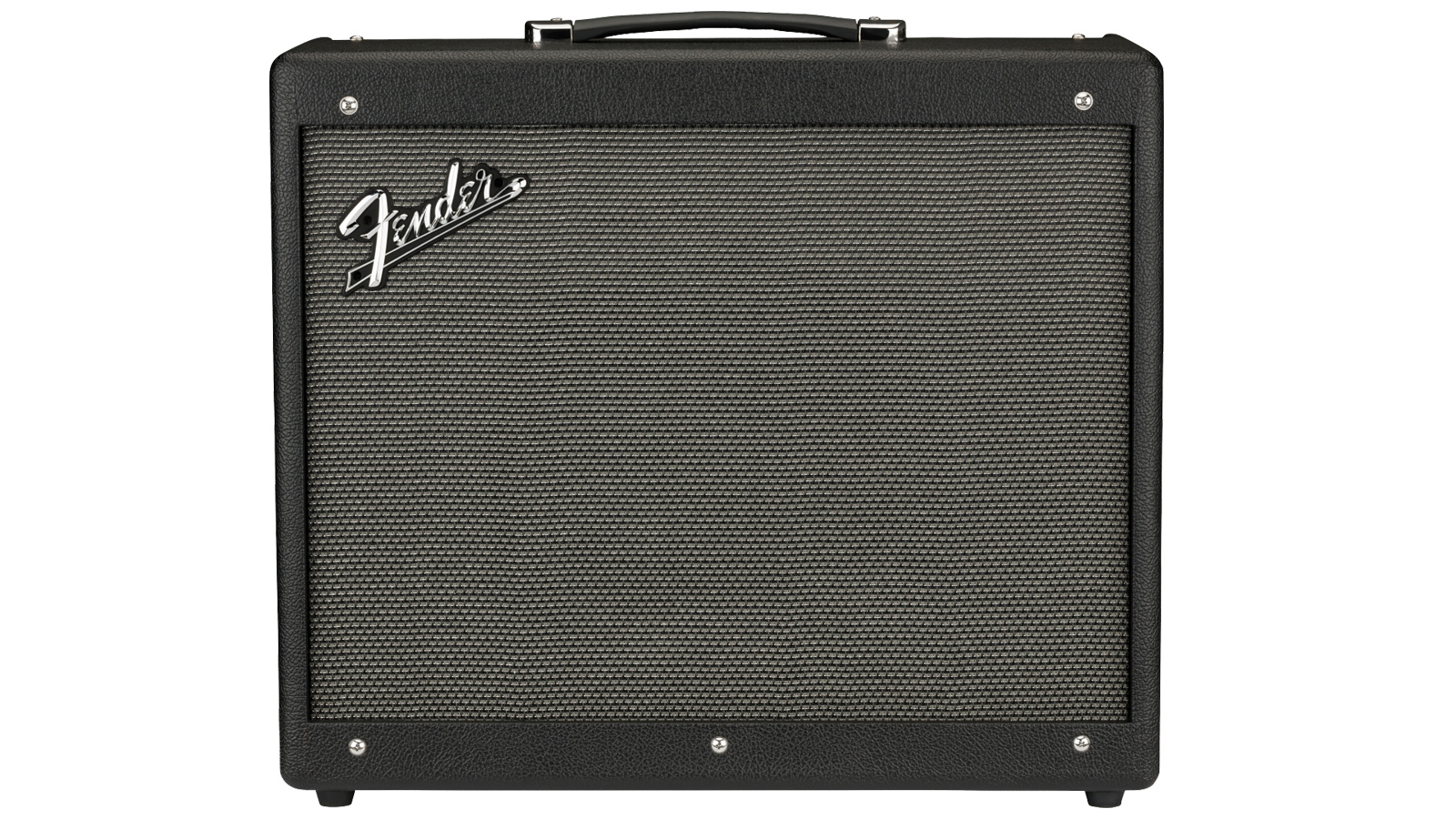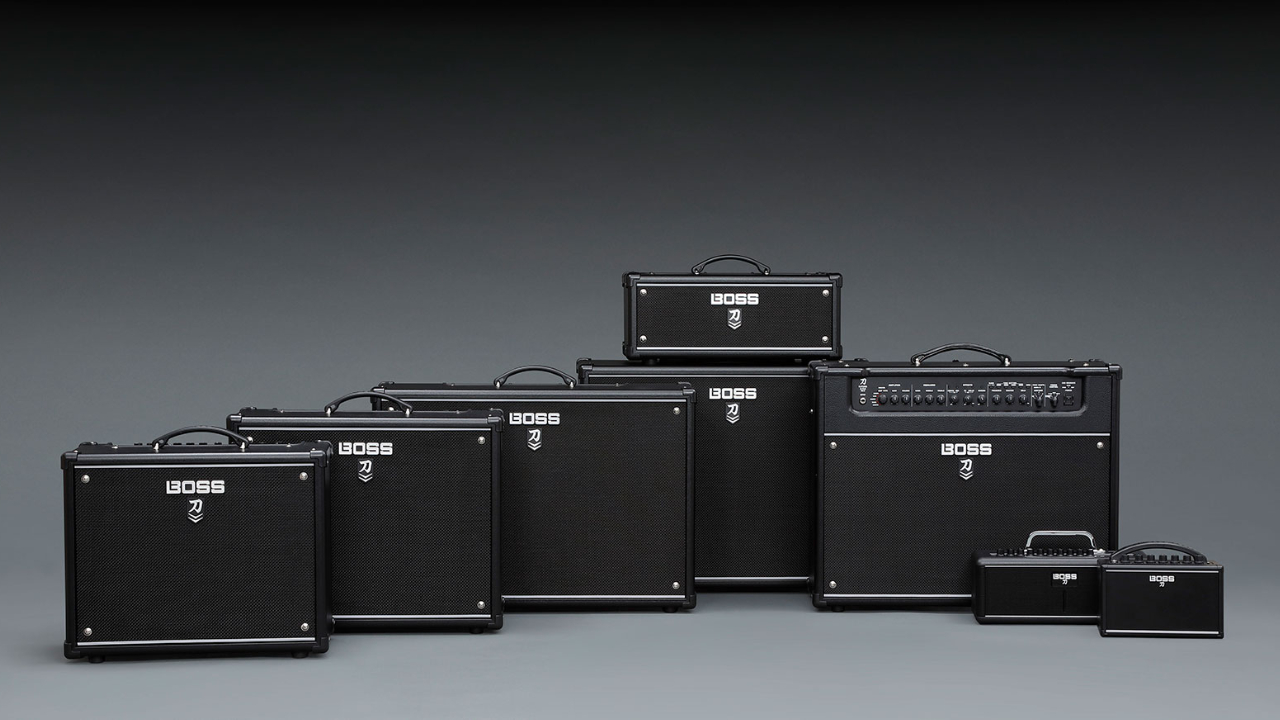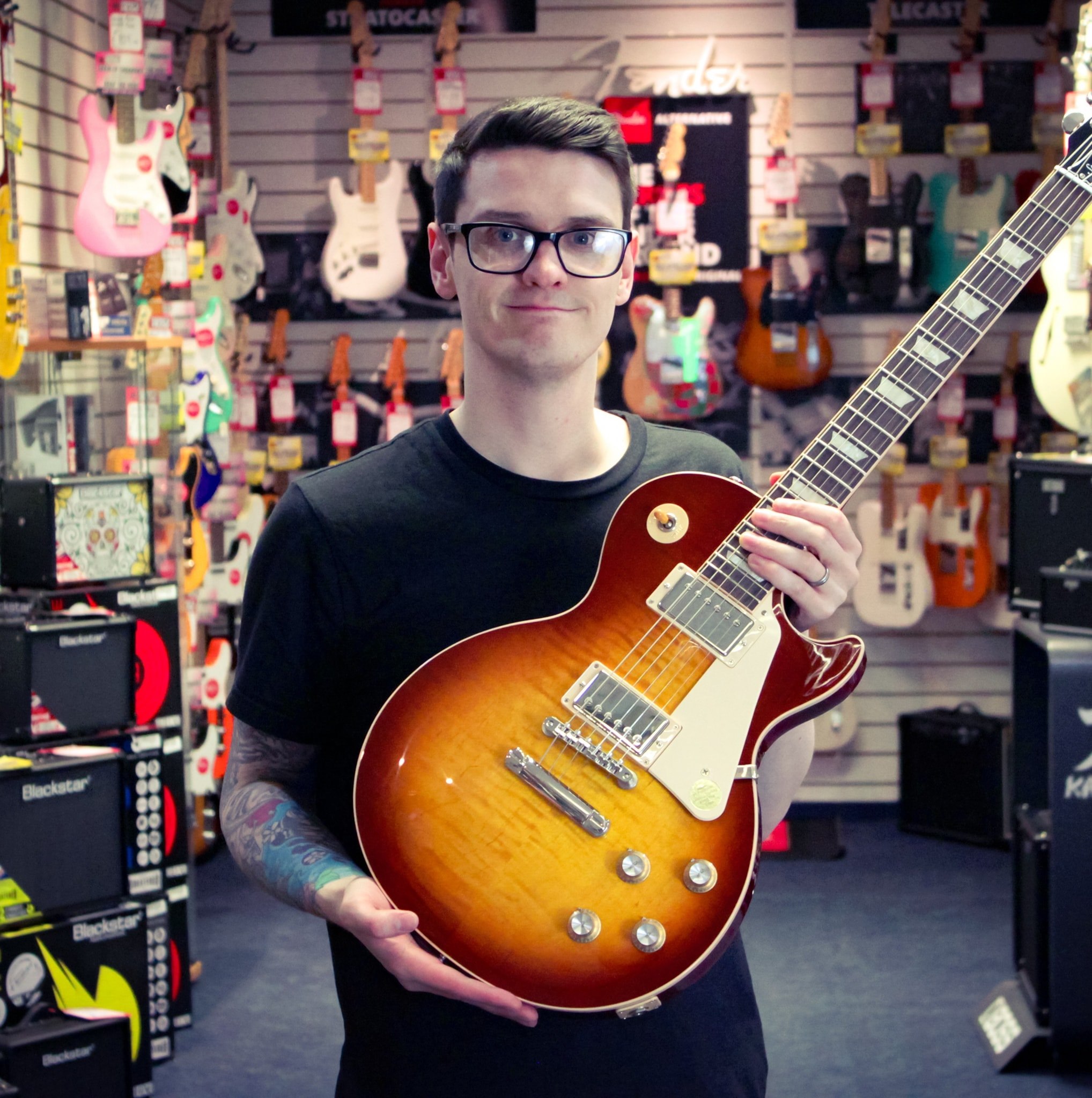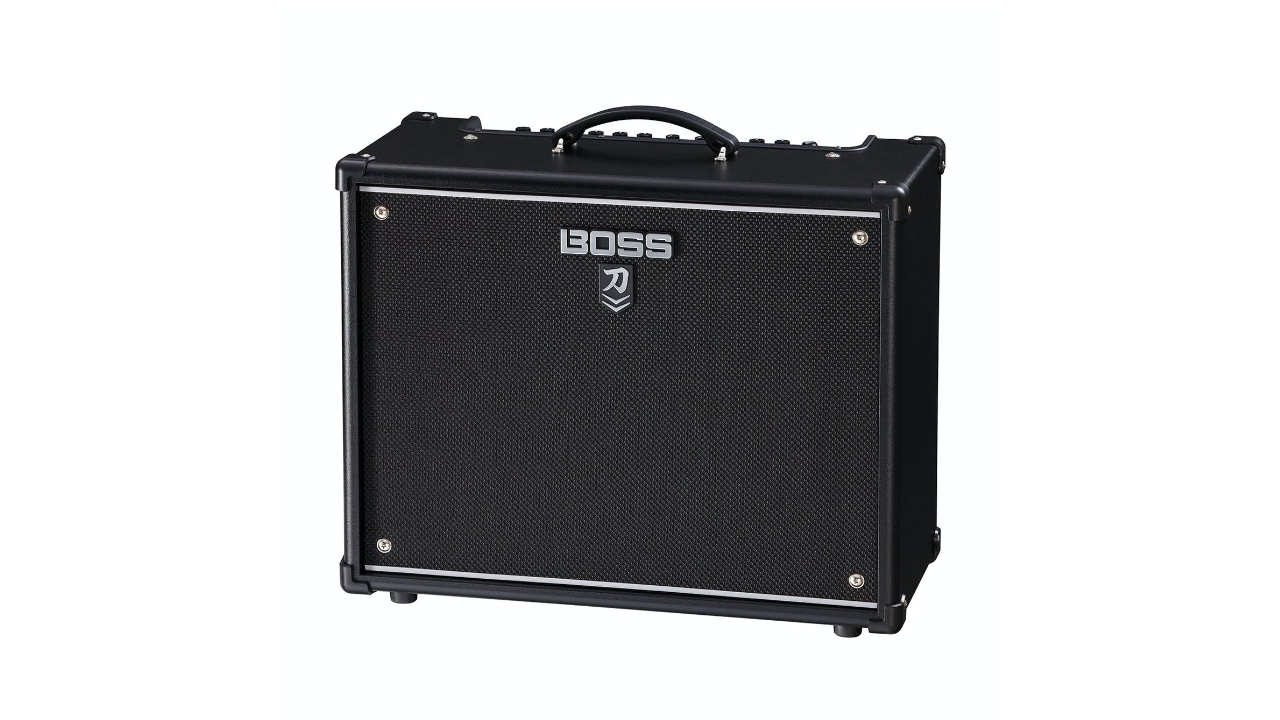Guitar World Verdict
It's fair to say that the original Katana was a smash-hit, and with a few upgrades for this new iteration, the next generation of Katana might just be even better.
Pros
- +
Built like a tank
- +
The Boss effects you know and love
- +
New amp model variations
Cons
- -
Some players prefer valves
- -
GA-FC is an optional extra
You can trust Guitar World
When the first generation of Katana was released back in 2016, it was a runaway success. This plucky little digital guitar amp captured the hearts of many players with its near-indestructible build, industry-leading effects, and bags of power. The Katana 100 MKII builds on the original amps legacy and takes it to a whole new level.
So before we talk about what has changed, let's quickly talk about what has stayed the same. The new Katana MKII shares the same elegantly simple look as the original with its functional all-black cabinet design and user-friendly control layout. The discrete look of this amp means it will happily blend into the background of any stage. Also making its way across from the previous generation is the convenient power control. Like the original, this allows you to change the amp's power output to 100W, 50W, or 0.5W, meaning this amp is perfect for medium to large gigs, band rehearsals, or even bedroom practice.
These tonal variations broaden the already wide spectrum of sounds offered by the original Katana, making the amp even more versatile.
Okay, let's take a look at what's different. The most significant and most obvious difference has to be the inclusion of a variation button for the amp models. This gives you an extra five sounds to sink your teeth into - that's double the original Katana! These tonal variations broaden the already wide spectrum of sounds offered by the original Katana, making the amp even more versatile.
Another welcomed change is the new dual concentric effects controls. This gives you more freedom to use effects how you like and allows you to stack different effects on top of each other. Next up is the ability to plug straight into the power amp. This is designed to be used with external amp modelers and multi-FX units, meaning you can bypass the amp models built-in to the Katana, and simply take advantage of the 100W of power and crystal clear speaker.

Lastly, we need to mention the new and improved Boss Tone Studio editing software. The newly updated look makes editing your favorite presets easier and quicker. With the inclusion of a dedicated pedal FX category, you can now simply assign wah and even pitch bend effects with an external expression pedal.
It has to be said that the new Katana is every bit as sturdy and reliable as its predecessor. Like all Boss products, this amp feels practically bomb-proof. For us, it's a must for any gigging amp to be dependable, and the Katana MKII is undoubtedly that. We also like that Boss hasn't tried to redesign the look of the Katana. Okay, it might not be the most glamorous-looking practice amp on the market. Still, it has a functional look that suits the aesthetic the amp is going for - and anyway, who says all black isn't cool?
So, let's talk about tone. It's safe to say that the MKII had a pretty good foundation to work from, as the sounds in the original amp were spot on. That said, more options can only be a good thing - especially when they sound this good. The variations here don't feel like wild departures from the originals. Instead, they round off the selection of voices nicely, adding a bunch of complementary colors to the already great sonic palette of the Katana.

Fender Mustang GTX100: Fender's newly designed modeling amp is a fantastic continuation of the famous Mustang line and even has a built-in looper!
Fender Tone Master Deluxe: No bells and whistles, just the simple tone of a deluxe reverb, but with no valves.
The variations bring a slightly different EQ characteristic to the voices. It's a little brighter and seems to bring out more of the complex overtones in the sound. This is particularly noticeable on the Crunch setting. There might even be a little more gain on some variations, but it's hard to tell if this is a result of the increased top end or actually more drive. As you'd expect, the clean tone in the Katana is magical - although you wouldn't expect any less from the guitar division of the company that brought the world the Jazz Chorus. That said, once you push the variation button, you'll most likely never go back.
Overall we really love the new variations, but it's hard to see a reason to go back to the original tones. They seem a little dark and lackluster in comparison. Now, that's not to say they sound bad, we just feel the new tones are better.
That brings us on to the effects - you know, the thing Boss is most famous for. It feels slightly redundant to say the effects sound great - of course they do - they are made by the world leader in compact guitar pedals, but they really do sound ace. More importantly, they are now easier to access and control. The addition of dual concentric pots means adjusting the balance of the boost, delay, modulation, and reverb is easier than ever. Also, we have to say, the ability to stack five sounds on top of each other is great fun and way better than the previous three on the original model. Okay, we might not always have that many effects on at once, but it's nice to have the option for when you want to get a little crazy.

To really unlock the full potential of this fantastic little amp, you really need the GA-FC footswitch. Now, this is a great footswitch, in a stage-friendly slim format. It’s intuitive and easy to use, but there is one problem - it doesn't come with the amp! We can't help feel this is an oversight from Boss. If you want to gig this amp successfully and take full advantage of all the features you need to have the footswitch, and compared to the price of the amp, it's a rather costly add-on. It's worth noting that the amp does work with the other small Boss pedals, such as the FS-5L and FS6, but really the GA-FC is the best option.
Lastly, let's talk about the newly updated Tone Studio companion software. The software feels sleeker and easier to navigate, which is precisely what you want from this type of software. Unfortunately, we often find ourselves not using the software, as it can feel awkward - like an afterthought. However, the updated Tone Studio is certainly more usable than the previous iteration and a welcome change. That said, if you don't like the idea of plugging in your new amp to your laptop, or you think of yourself as a technophobe, don't worry. The amp works perfectly fine without it.
Boss Katana 100 MKII review: Verdict
You can trust Guitar World
Overall this is a fantastic amp, and there is very little to complain about here. The new MKII builds on the great legacy established by the original Katana and takes it to new heights. The newly added amp sounds are a welcome addition, and the upgraded effects layout is a vast improvement over the previous model.
- Boss Katana vs Line 6 Catalyst: Which should you buy?
Boss Katana 100 MKII review: Specifications
- Power Output: 100W
- Speaker: 30 cm (12 inches)
- Controls: POWER switch, MASTER knob, PRESENCE knob, POWER CONTROL switch (STANDBY, 0.5 W, 50 W, 100 W), VARIATION button, AMP TYPE, knob (ACOUSTIC, CLEAN, CRUNCH, LEAD, BROWN), GAIN knob, VOLUME knob, BOOSTER button, MOD button, FX button, DELAY button, REVERB button, TAP button, BOOSTER knob, MOD knob, FX knob, DELAY knob, REVERB knob
- Size: 530 x 248 x 484
- Weight: 14.8 kg/32 lbs 11 oz
- Contact: Boss

Daryl is a Senior Deals Writer at Guitar World, where he creates and maintains our 200+ buyer's guides, finds the best deals on guitar products, and tests the latest gear. His reviews have been featured in prominent publications like Total Guitar, Future Music magazine, and MusicRadar.com.
During his career, he has been lucky enough to talk to many of his musical heroes, having interviewed Slash and members of Sum 41, Foo Fighters, The Offspring, Feeder, Thrice, and more. In a past life, Daryl worked in music retail. For a little under a decade, he advised everyone from absolute beginners to seasoned pros on the right gear for their needs.
Daryl is also a fully qualified sound engineer, holding a first-class Bachelor's degree in Creative Sound Production from the University of Abertay.
“I use a spark plug to play slide. It's a trick Lowell George showed me. It gets incredible sustain – metal on metal”: In the face of sexist skepticism, Fanny's June Millington carved a unique six-string path, and inspired countless players in the process
“An esoteric boutique vibe, superb ergonomics and a powerful, unique preamp – Tobias is back”: Tobias Growler IV review
The heaviest acoustic guitar ever made? Two budding builders craft an acoustic entirely from concrete because they “thought the idea was really funny”











